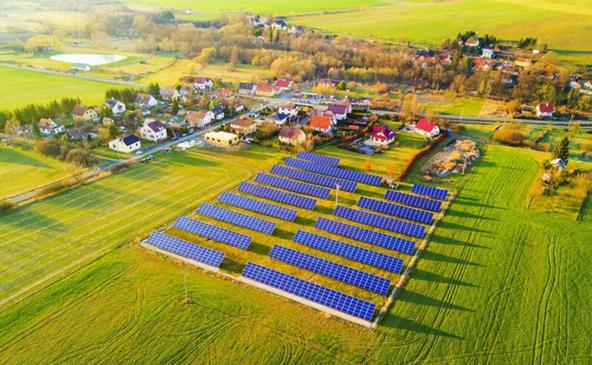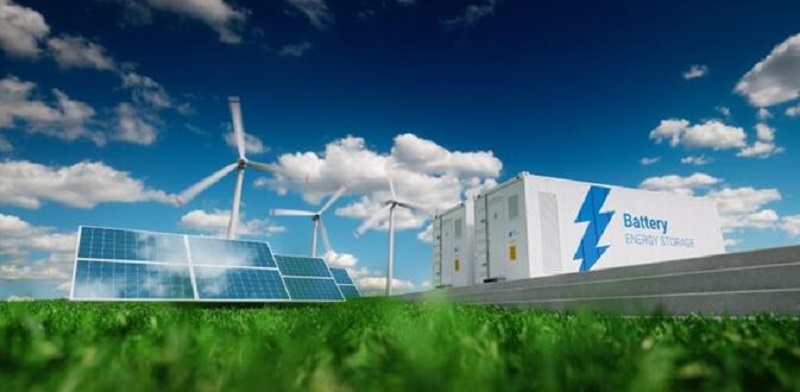The Internet of Things (IoT) has already disrupted many aspects of our daily lives. Home appliances have become connected devices that not only allow us to control lights and shop online, but even provide security features when we are away from home. In the industrial sector, smart factories are changing the way products are manufactured. The Industrial Internet of Things (IIoT) is not only making manufacturers more agile, it is also enabling them to respond more quickly and economically to changes in customer needs. The central key to all of these developments mentioned above is information. The IoT allows machines to exchange information directly and connect networks to share it. However, it would be a mistake to think that this new technology only exists in homes or factories!
Transmission Networks
Another revolution is taking place in the energy industry. The way society generates and delivers energy is changing, led by new technologies, and fuelled by a growing awareness of the need to protect the environment.
Electricity received on conventional transmission networks is generated from large facilities. Conventional power plants, whether coal-fired, gas-fired, or nuclear, benefit from economies of scale. These huge plants feed energy into the transmission network. This energy is sometimes transmitted over long distances using high-voltage cables, and then converted by regional substations into voltages that can be used in homes and factories.
The sheer size of this infrastructure, with hundreds of thousands of kilometers of terrestrial cables, makes it extremely burdensome to maintain. Until recently, however, it was the most efficient way of supplying electricity to the entire country.
The value of this infrastructure, coupled with its impact on the environment, has prompted many to look at alternative energy sources. Some governments are investing in renewable energy: hydroelectricity or wind power. But this will not solve the problem of transmission and distribution. The need for lengthy cables remains.

Generating Electricity for Transmission
However, modern technology has led to the development of many new energy sources. Small-scale power plants have been developed as a highly efficient alternative to the centralized structure of the traditional grid. Known as Distributed Electricity Resources (DERs), these plants are rarely larger than 10 megawatts in size and use a variety of renewable energy sources to generate electricity. In addition to the familiar wind turbines and solar panels, they also include biomass and even geothermal energy sources.
Since these alternative energy sources are often used as supplementary power sources to the conventional grid, they are often connected to the existing grid. This, however, creates many potential problems. Some alternative energy sources are not stable. Wind turbines won’t produce electricity if there’s no wind. If there’s no sunlight, solar cells won’t work. This also leads to a very complex relationship between supply and demand.
In addition, when regional power plants generate an abundance of energy, the excess can be sent back to the conventional grid. However, the infrastructure itself is not designed to deliver power in both directions, and there is the potential for hardware damage from the introduction of regionally generated power. Distributed power resources must be regulated to ensure their quality, and the power delivered to the grid must be managed properly.

Enter the Smart Grid
Promoting the technology behind the operation of the Internet of Things allows the above ideals to be realized. The Smart Grid uses data to control a decentralized power generation network, combining both the output power from traditional large-scale power plants as well as the power generated by local households, businesses, and communities.
Smart technology not only allows the refrigerator at home to be connected to the shop via the Internet but also allows DERs to communicate with other parties on the grid. In this way, the system automatically manages the relationship between the demand of consumers in the region and the output of the grid. In addition to controlling the output of DER, it can also coordinate and synchronize with the power supplied by the grid.
In a traditional centralized grid, the consumer is completely passive, only consuming power and paying for it. Smart grids allow consumers to become truly active participants, balancing demand with their generating capacity so that they can plan their local generation appropriately. When demand exceeds the capacity of local generation, consumers can supplement it with power from the grid. At other times, the excess power generated locally can be sold back to the grid, thereby reducing the cost of electricity to consumers.
Another benefit of balancing regional and centralized generation is the reduction of infrastructure. If a community or business can use distributed generation to supplement its own power needs, the grid does not need to carry the same amount of power as before. As a result, the size of the grid can be reduced, resulting in lower maintenance requirements and less impact on the environment.
In the case of smart factories and grid-connected homes, the security of data transmission is a key element in the construction of smart grids. When it comes to connectors, these components must not only cope with high data transmission rates but also withstand the harsh conditions encountered in energy infrastructures. To provide links in such demanding environments, products must be designed to operate in extreme conditions beyond the specifications of normal data connectors.













Leave a comment